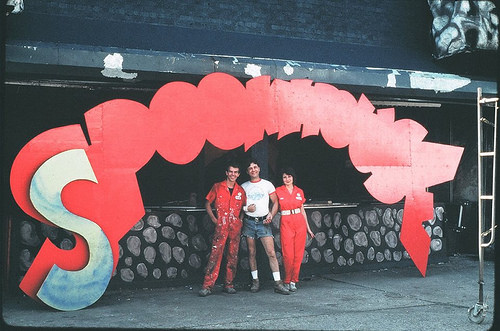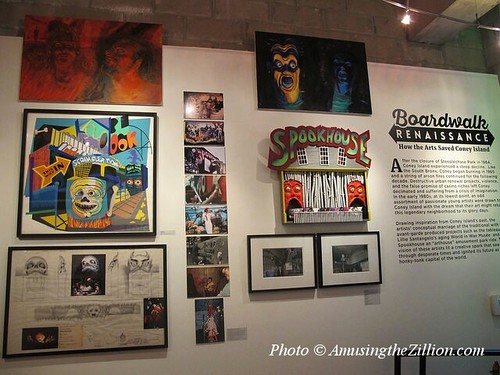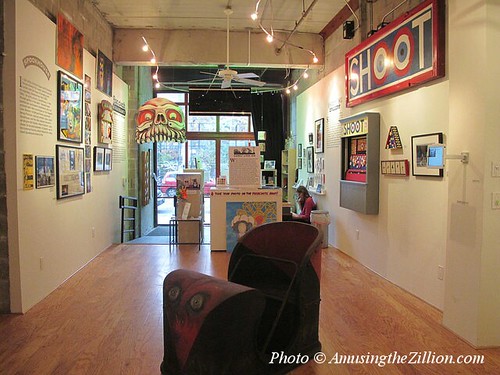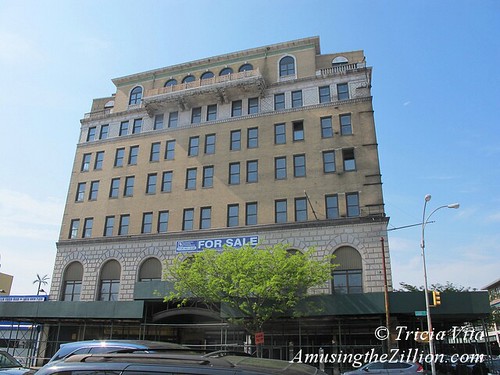
Walking on Boardwalk Under Construction, November 29, 1922. Photo by E.E. Rutter via NYC Dept of Records, Municipal Archives
This Sunday, May 15, is the 93rd anniversary of the official opening of Coney Island’s Riegelmann Boardwalk. Last week, Coney poet Michael Schwartz crooned a few lines from “Under the Boardwalk” and recited poetry as part of his testimony before the City Council’s Land Use Committee. He was among about 15 people who took time out from their work day to speak at City Hall in favor of Councilman Mark Treyger’s resolution that the Landmarks Preservation Commission designate the Boardwalk a scenic landmark.
The LPC had previously said no, but is now said to be reconsidering. You may want to phone, email or write letters of encouragement to Meenakshi Srinivasan, Commissioner of the Landmarks Preservation Commission. Contact information is here. Use the hashtag #LandmarkTheBoardwalk when you post on social media.
Schwartz’s eloquent testimony, printed in full below, begins with an excerpt of his poem, “The Under-Talker,” from a book-in-progress of poems, short stories and monologues set in Coney Island and called The Invisible Exhibitionist and other Attractions.
What will happen to us now that they took away under the boardwalk?
We won’t be falling in love
under the boardwalk…
boardwalk.
I heard that pushing the sand right up under the boards like that is what causes them to erode and crack.
I wish we could have our down by the sea on a blanket with my baby under the boardwalk back.
Did you hear that when they filled it in Homeless John the Under-Talker was buried alive?
Under the boardwalk.
Yesterday I tripped on a broken board and fell on my ear
and I swear while I was there
I could still hear him talk.
If you listen closely…
you can still hear him talk.First they came for under the boardwalk… Then they came for the boardwalk. It started already. Part of the boardwalk’s already been paved over, even though that’s not what the people wanted. And in the middle of the night before it would have been landmarked, they bulldozed our beloved original Thunderbolt. And they came under darkness in the middle of the night and destroyed our beloved West 8th Street bridge to the boardwalk that protected us from traffic, because we didn’t have the power to protect it. If we don’t have the power to protect our world famous beloved boardwalk that connects neighborhoods, businesses, and people, one day we will wake up and it won’t be there, at least not as we know it. Where’s the boardwalk? Oh my God, it’s a sidewalk. Don’t we have enough sidewalks?
Boardwalk Not Sidewalk/No Concrete. Sign on Building Facing Boardwalk East of Ocean Parkway in Brighton Beach. Photo © Bruce Handy
The historic beloved boardwalk is one of the last walkways in our world that is an oasis from the concrete that hardens our souls and hammers our joints. Also, concrete will not absorb water or heat the way wood does. In this apocalyptic time of hurricanes and floods, the walkway by the water is wood for practical as well as aesthetic reasons. Coney Island is called the people’s park because it’s different than those other sanitized corporatized parks. When Coney becomes corporatized, such as when the Republican nominee’s father Fred destroyed Steeplechase, they demolish more than just the people’s parks, they break the people’s hearts.
We’ve seen too many New York treasures wiped out by corporate greed, little by little turning the greatest city in the world into just another impersonal unaffordable clone of Anymall, USA. We lost the original Penn Station, the 8th wonder of the world, because it wasn’t landmarked. We saved Grand Central Station because it was landmarked. If we don’t landmark the boardwalk, we’ll lose it. We’ll lose ourselves.
© Michael Schwartz



















